| Portrait | Name
(Birth–Death) | Term of office | Notable events | Appointer |
|---|
Before 1773 Governors General of the Presidency of Fort William (Bengal) was named as Governor of Bengal, which was in existence since 1757 to 1772.
For the list of Governors of Bengal see List of governors of Bengal.
|
| Governors General of the Presidency of Fort William (Bengal), 1773–1833 |
|---|
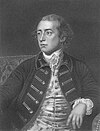 | Warren Hastings
(1732-1818) | 20 October
1773
[nb 1] | 1 February
1785 |
- Regulating Act of 1773
- Supreme Council of Bengal
- Supreme Court of Judicature at Fort William (1774) was established
- Asiatic Society of Bengal (1784)
- Pitt's India Act (1784)
- Stopped Mughal pension to Shah Alam II
- Abolished the Dual System in Bengal
- Moved Treasury from Murshidabad to Calcutta
- Bengal Gazette- First Indian newspaper published (in 1780)
- First Anglo-Maratha War (1775–82)
- Second Anglo-Mysore war (1780–84)
- First Rohilla War of 1773–1774
- "Ring fence policy"
- Experimentation on land settlements. (1772-five years settlement, changed to 1 year in 1776)
- English Translation of Bhagwat Gita by Charles Wilkins[2]
| East India
Company

(1773–1858) |
 | John Macpherson
(acting)
(1745–1821) | 1 February
1785 | 12 September
1786 |
|
 | Charles Cornwallis
The Marquess Cornwallis [nb 2]
(1738–1805) | 12 September
1786 | 28 October
1793 |
- Established lower courts and appellate courts
- Permanent Settlement in Bihar and Bengal in 1793
- 3rd Anglo-Mysore war (1790-92)
- Introduction of Cornwallis Code
- Introduction of Civil Services in India
- Sanskrit Vidyalaya at Benares (now Varanasi) established by Johnathan Duncan(then Governor of Bombay)
- Introduced "Sunset Law"
|
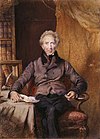 | John Shore
(1751–1834) | 28 October
1793 | 18 March
1798 |
- Policy of Non-intervention
- Charter Act of 1793
- Second Rohilla War 1794
- Battle of Kharda between Nizam and Marathas (1795)
|
 | Alured Clarke
(acting)
(1744–1832) | 18 March
1798 | 18 May
1798 | |
 | Richard Wellesley, Earl of Mornington [nb 3]
(1760–1842) | 18 May
1798 | 30 July
1805 |
- Introduction of Subsidiary Alliance (1798)
- Fourth Anglo Mysore War 1799
- Second Anglo-Maratha War (1803–05)
- Fort William College at Calcutta (1800)
- Raj Bhavan at Calcutta was established in 1803
|
 | The Marquess Cornwallis
(1738–1805) | 30 July
1805 | 5 October
1805 | |
 | Sir George Barlow, Bt
(acting)
(1762–1847) | 10 October
1805 | 31 July
1807 |
- Sepoy mutiny at Vellore (The prelude to the First War of Independence of India)
- Bank of Calcutta (1806) established (later Imperial Bank of India, now State Bank of India)
|
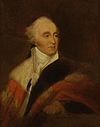 | The Lord Minto
(1751–1814) | 31 July
1807 | 4 October
1813 |
- Charter Act of 1813
- Treaty of Amritsar, 1809 with The Great Maharaja Ranjit Singh
|
 | Francis Rawdon-Hastings, 1st Marquess of Hastings [nb 4]
(1754–1826) | 4 October
1813 | 9 January
1823 |
- Ended the policy of Non-intervention
- Third Anglo-Maratha War (1816-1818)
- Treaty of Sugauli (1816)
- Creation of Bombay Presidency in 1818
- Establishment of Ryotwari System in Madras (1820)
- Establishment of Mahalwari System in Northern India (1822)
- Hindu College (now Presidency University) at Calcutta in 1817
- The Pindari War (1817-1818) (Complete Destruction of the Pindari Clan of India)
- General Committee of Public Instruction was formed in 1823
|
 | John Adam
(acting)
(1779–1825) | 9 January
1823 | 1 August
1823 |
- Licensing Regulations
- Calcutta Unitarian Committee established by The Great Raja Ram Mohan Roy
|
 | The Lord Amherst
(1773–1857) | 1 August
1823 | 13 March
1828 |
- First Anglo-Burmese War (1824–26) (East India Company crushes Burmese King Bagyidaw and annexes Assam, Manipur, Arakan and Tenasserim)
- Establishment of Sanskrit College at Calcutta (1824)
- Treaty of Yandabo, 1826 (East India Company humiliates and extracts 1 million Pounds from the Burmese King Bagyidaw)
|
 | William Butterworth Bayley
(acting)
(1782–1860) | 13 March
1828 | 4 July
1828 | |
| Governors-General of India, 1833–1858 |
|---|
 | Lord William Bentinck
(1774–1839) | 4 July
1828 | 20 March
1835 |
- First Governor General of India
- Bengal Sati Regulation, 1829
- Mahalwari System in Central India,Punjab And Western UP.
- Saint Helena Act 1833 or Charter Act, 1833 (Christian Missionaries get Exclusive rights to spread Christianity in British India which included the present day Pakistan)
- Kol Rebellion in 1831
- English Education Act 1835
- Medical College and Hospital, Kolkata (1835)
| East India
Company

(1773–1858) |
 | Charles Metcalfe, Bt
(acting)
(1785–1846) | 20 March
1835 | 4 March
1836 |
- Repealed 1823 Licensing Regulations
- Known as Liberator of India Press
- Establishment of Calcutta Public Library in 1836 (currently known as National Library of India)
|
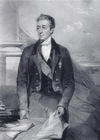 | The Lord Auckland
(1784–1849) | 4 March
1836 | 28 February
1842 |
- Tripartite Treaty in 1838 between British, Shah Shuja (a cruel Afghan traitor) and The Great Maharaja Ranjit Singh against Dost Muhammad Khan.
- The First Anglo Afghan War(1840-1842) (British Army massacred by the strong Afghan army and militia during the 1842 Retreat from Kabul-worst British Military disaster)
- Bank of Bombay (1840) established (later Imperial Bank of India, now State Bank of India)
- First Bengali daily newspaper Sambad Prabhakar was published in 1839
- Tattwabodhini Sabha was formed by Debendranath Tagore in 1839
|
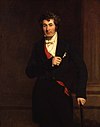 | The Lord Ellenborough
(1790–1871) | 28 February
1842 | June
1844 |
- Gwalior War (1843) (British Crush Marathas once and for all)
- Bank of Madras (1843) established (later Imperial Bank of India, now State Bank of India)
|
 | William Wilberforce Bird
(acting)
(1784–1857) | June
1844 | 23 July
1844 | |
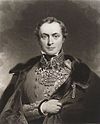 | Henry Hardinge
(1785–1856) | 23 July
1844 | 12 January
1848 |
- The First Anglo-Sikh War (1845–46) (British Empire crushes the Sikh Empire and confiscate major portion of its territory)
- Treaty of Lahore(1846) (British confiscate Kashmir from the Sikhs and sell it to Raja of Jammu for 75 lakh rupees)
- Establishment of Roorkee Engineering College (1847)[3]
|
 | The Earl of Dalhousie
(1812–1860) | 12 January
1848 | 28 February
1856 |
- Doctrine of Lapse in 1848
- Bethune Collegiate School (1849) (was also known as Calcutta Female School) was established by John Elliot Drinkwater Bethune
- Charles Wood Despatch (1854)
- Establishment of summer capital at Shimla
- Second Anglo-Burmese War (1852) (The sole aim of Dalhousie was to humiliate and annex more of Burmese Territories. Burma was attacked unprovoked)
- First Passenger train between Bombay and Thane (1853)
- First telegraph Line was laid between Diamond Harbour to Calcutta. (1851)
- Post Office Act, 1854
- Established Public Works Department (1854)
- The Second Anglo-Sikh War (1848-1849) (The British completely crush The Great Sikh Empire)
- Santhal Rebellion (1855) (15000 Santhals were brutally killed by the British Army while crushing the rebellion. elephants were used to destroy Santhal Dwellings)
|
 | The Viscount Canning
(1812–1862) | 28 February
1856 | 31 October
1858 |
- Hindu Widows' Remarriage Act, 1856
- Indian Rebellion of 1857
- University of Calcutta, University of Bombay, and University of Madras were set up in 1857
| |
| Governors-General and Viceroys of India, 1858–1947 |
|---|
 | The Viscount Canning
(1812–1862) | 1 November
1858 | 21 March
1862 |
- The Government of India Act, 1858
- System of Budget introduced
- Formation of Imperial Civil Services
- Indigo Revolt in Bengal in 1859-60
- Enactment of Indian Penal Code in 1860
| Victoria

(1837–1901) |
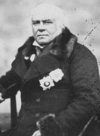 | The Earl of Elgin
(1811–1863) | 21 March
1862 | 20 November
1863 |
- Establishment of Calcutta High Court (2 July), Bombay High Court (14 August) and Madras High Court (15 August) in 1862
|
 | Robert Napier
(acting)
(1810–1890) | 21 November
1863 | 2 December
1863 | |
 | William Denison
(acting)
(1804–1871) | 2 December
1863 | 12 January
1864 | |
 | Sir John Lawrence, Bt
(1811–1879) | 12 January
1864 | 12 January
1869 |
- Bhutan War (1864-65) (The British crushed an army-less Bhutan and annexed Assam and Bengal Duars)
- Establishment of Shimla as India's summer capital in 1863
- The Tabernacle of New Dispensation, a new Church established by Keshub Chandra Sen
- Establishment of Allahabad High Court in 1866
|
 | The Earl of Mayo
(1822–1872) | 12 January
1869 | 8 February
1872 |
- Assassinated by a Pathan Sher Ali Afridi
- Started the Census.
- Opening of Rajkumar college in Rajkot and Mayo College at Ajmer for political training of Indian Princes
- Started Financial decentralization
- Enacted IPC amendment-Sedition Act 1870 to tackle Wahabi Movement
- Keshub Chandra Sen establishes Indian Reform Association
|
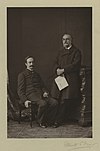 | Sir John Strachey
(acting)
(1823–1907) | 9 February
1872 | 23 February
1872 | |
 | The Lord Napier
(acting)
(1819–1898) | 24 February
1872 | 3 May
1872 | |
 | The Lord Northbrook
(1826–1904) | 3 May
1872 | 12 April
1876 |
- Jyotiba Phule launches The Satyashodhak Samaj in Maharashtra in 1873 against the caste system and Untouchability.
- Dramatic Performances Act, 1876
|
 | The Lord Lytton
(1831–1891) | 12 April
1876 | 8 June
1880 |
- Vernacular Press Act, 1878
- Second Anglo-Afghan War, (1878-80)
- 1st Delhi Durbar out of 3
- Queen Victoria assuming the title of 'Empress of India'
|
 | The Marquess of Ripon (Pro-Indian Viceroy of India)
(1827–1909) | 8 June
1880 | 13 December
1884 |
- First Factory Act (1881)
- Repeal of the Vernacular Press Act (1882)
- Ilbert Bill (1883)
- Government resolution on local self-government (1882)
- Appointment of Education Commission under Sir William Hunter
|
 | The Earl of Dufferin
(1826–1902) | 13 December
1884 | 10 December
1888 |
- Formation of Indian National Congress (1885)
- Third Anglo-Burmese War (1885)
|
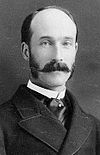 | The Marquess of Lansdowne
(1845–1927) | 10 December
1888 | 11 October
1894 |
- Indian Council Act 1892
- Factory Act 1891
- Setting up of Durand Commission in 1893 (India-Afghanistan)
|
 | The Earl of Elgin (1849–1917) | 11 October
1894 | 6 January
1899 |
- Establishment of Ramkrishna Mission by Swami Vivekananda at Belur Math in 1897
|
 | The Lord Curzon of Kedleston
(1859–1925) | 6 January
1899 | 18 November
1905 |
- Partition of Bengal (1905)
- Official Secrets Act 1904 to curb free press
- 2st Delhi Durbar out of 3 (1903)
- Appointment of Police Commission under Sir Andrew Frazer
- Appointment of Raleigh University Commission (1902)
- Passing of Indian Universities Act 1904
- 2nd Swadeshi Movement (1905-1911) against Partition of Bengal by Lal-Bal-Pal-Aurbindo Ghosh)
- Establishment of Archaeological Survey of India
- Benaras Hindu Girl's School was established by Annie Besant in 1904
- (He said, "India is the pivot of our Empire.... If the Empire loses any other part of its Dominion we can survive, but if we lose India, the sun of our Empire will have set."
[4]
|
 | The Earl of Minto
(1845–1914) | 18 November
1905 | 23 November
1910 |
- Morley-Minto Reforms 1909 or The Indian Councils Act 1909
- Split in Congress in 1907
- Seditious meetings (prohibition) Act 1907 to curb extremist movement
- Establishment of Muslim League by Aga Khan III (1906)
- Indian Press Act, 1910
- Jamsetji Tata established TISCO in 1907
| Edward VII

(1901–1910) |
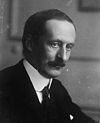 | The Lord Hardinge of Penshurst
(1858–1944) | 23 November
1910 | 4 April
1916 |
- Third Delhi Durbar (1911)
- Transfer of capital from Calcutta to Delhi (1911)
- Partition of Bengal to form Bihar province (1912)
- McMahon border line was created between India and China in 1914
- Ghadar Mutiny (1915)
| George V

(1910–1936) |
 | The Lord Chelmsford
(1868–1933) | 4 April
1916 | 2 April
1921 |
- Formation of Indian Home Rule Movement (1916)
- Lucknow Pact (1916)
- Montagu-Chelmsford Reforms (1919)
- Government of India Act 1919
- Rowlatt Act (1919)
- Jallianwalla Bagh Massacre (1919)
- Imperial Bank of India (now State Bank of India established in 1921)
|
 | The Earl of Reading
(1860–1935) | 2 April
1921 | 3 April
1926 |
- Malabar rebellion (also known as Moplah Rebellion), first Ethnic Rebellion (1921)
- Non-cooperation movement (1921-22)
- Rabindranath Tagore founded Visva-Bharati University in 1921
- Chauri Chaura incident (1922)
|
 | The Lord Irwin
(1881–1959) | 3 April
1926 | 18 April
1931 |
- Simon Commission (1928)
- Nehru Report (1928)
- Death of Lala Lajpat Rai (1928)
- Fourteen Points of Jinnah (1929)
- Purna Swaraj declaration (1929)
- Salt March (1930)
- Dharasana Satyagraha (1930)
- First Round Table Conferences (1930)
- Allahabad Address (1930)
- Chittagong armoury raid in 1930
- Gandhi–Irwin Pact (1931)
- Execution of Bhagat Singh, Shivaram Rajguru, and Sukhdev Thapar (1931)
|
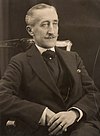 | The Earl of Willingdon
(1866–1941) | 18 April
1931 | 18 April
1936 |
- Poona Pact between Mahatma Gandhi and B. R. Ambedkar in 1932
- Pakistan Declaration (1933)
- Government of India Act 1935
- Reserve Bank of India established by passing The Reserve Bank of India Act 1934.
- Foundation of Congress Socialist Party in 1934
|
 | The Marquess of Linlithgow
(1887–1952) | 18 April
1936 | 1 October
1943 |
- Indian provincial elections (1937)
- Indian entry into World War II (1939)
- Day of Deliverance (1939)
- Lahore Resolution (1940)
- Cripps Mission (1942)
- Formation of Indian Legion (1942)
- Quit India movement (1942)
- Formation of Indian National Army (1942)
- Bengal famine (1943)
| Edward VIII

(1936) |
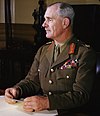 | The Viscount Wavell
(1883–1950) | 1 October
1943 | 21 February
1947 |
- C. R. formula (1944)
- Simla Conference (1945)
- Cabinet Mission (1946)
- Interim Government was formed in 1946
- Direct Action Day (1946)
- Royal Indian Navy mutiny (1946)
| George VI

(1936–1952) |
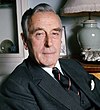 | The Viscount Mountbatten of Burma
(1900–1979) | 21 February
1947 | 15 August
1947 |
- Indian Independence Act 1947
|
| Governors-General of the Dominion of India, 1947–1950 |
|---|
 | The Viscount Mountbatten of Burma
(1900–1979) | 15 August
1947 | 21 June
1948 |
| George VI

(1936–1952) |
 | C. Rajagopalachari
(1878–1972) | 21 June
1948 | 26 January
1950 |






















































